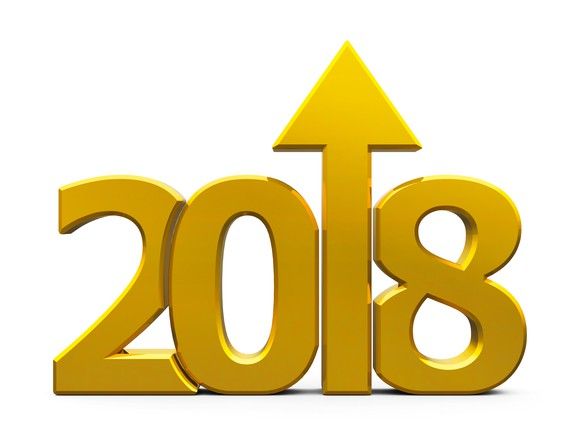B2B Marketing Trends to Consider in 2018

Each year we look forward to delivering our predictions for the marketing trends that we think will take off and become the new normal 12 months later. Last year our predictions were pretty accurate and we’re all seeing more online sales direct from B2B websites (our last project in 2017 was launching an ecommerce module for a client), we’re still repurposing content, we’re spending more than ever before on paid search content and video is everywhere. Where we fell down in last year’s predictions was user generated content, already prevalent in B2C, would come to B2B. Except it didn’t, at least not in the way we thought.
So, on a year over year track record of 4/5 predictions, here are our 5 predictions for 2018:
1. Facebook
In mid-2017 we noticed that Facebook ads were increasingly targeted towards B2B advertising. Prior to that, we were telling the majority of our clients that Facebook was not worth the time investment as compared to other social media channels and/or marketing tactics because postings didn’t appear on timelines and their advertising could not map as neatly to customer personas as LinkedIn could.
About the same time, Hubspot announced their partnership with Facebook and began to seamlessly incorporate many of their features into their software. We were already building out Facebook pages, exploring tactics to quickly build likes and engagement and advertising in earnest. And we found that Facebook is a very cost-effective way to build brand awareness, quickly generate a high number of leads and prove ROI. Like with every marketing tactic it works better for some clients than others. We find the number of leads are high but are sometimes balanced out by low quality as opposed to LinkedIn which has a much higher cost per lead and also high quality. Finding your audience on Facebook is more complicated than on LinkedIn but we are convinced Facebook is back on the map for B2B marketing and we predict more B2B use in 2018.
2. Keywords Are Out, Content Themes are In
We used to rely on search volumes to select top keywords for our clients. This started to fall apart in 2016 when the Google Adwords planner switched to giving uselessly high ranges for search volumes rather than actual numbers. Rand Fishkin of Moz recently wrote a blog summarizing the problems with this approach summarized as follows: The ranges are too large to be useful, the numbers don’t match with Analytics or Adwords, keywords are combined (ie – marketing, marketer, markets), but still don’t match up and Adwords hides good keywords if they don’t have a viable search volume for commercial purposes. During the time everyone was grappling with the changes to the Adwords planner, we began to focus exclusively on certain keywords we knew made sense for our client’s prospective customers to search while still accurately describing their business and products or solutions.
Hubspot then introduced Content Pillars which immediately made intuitive sense to us. Rather than limiting to keywords (or worse, keyword stuffing) as in days prior to 2016, content pillars seemed to align with our new strategy. So, while the methodology has somewhat changed, we’re still thinking about how our prospective customers search for our clients and are building our content around that. We don’t expect this to change in 2018 and we expect to spend more time building out those content pillars.
3. Long Form Content
In 2016, we were writing blogs at about 400 words. We reasoned that we needed a minimum of 300 words for Yoast, the SEO ranking tool within Wordpress, to recognize the content and we didn’t want to bore or lose busy audiences with short attention spans. However, some topics don’t lend themselves to 400 words and we would produce blogs with 900 or even 1100 words. And in 2017, we started to notice that those blogs were ranking higher in traffic and engagement. So we experimented with the Mezzanine blog and verified that longer form content performs better for traffic and engagement. Studies published in late 2017 confirmed what we noticed. Of course, we still need to ensure that the topic is of interest and write authoritatively on it but we see an appetite for good-quality content that defies the trend of making content fast and easy to digest.
4. Account Based Marketing (ABM)
ABM is key account marketing where the company treats each prospective company as one market or individual. This could include anything from email drip campaigns to more complex marketing programs that involve other communication channels such as direct mail. This approach works well for companies that understand their customer personas and have a deep body of content to use. No longer limited to enterprise sales, ABM works well for smaller companies and we know it increases prospective customer engagement and shortens the sales cycle.
5. Deeper Personalization in Marketing Automation
Due to ABM and the ever-evolving need to increase engagement through creative means, we think personalization will proliferate in 2018. This involves creating user specific content for one person and involves understanding where they are in their buying cycle and providing that perfect piece of content to nudge them towards purchase. There is software that helps with this, similar to how eCommerce sites serve up additional and related products for you. This would not be possible without marketing automation, CRM software and good data. The data that we get from analyzing engagement with content helps us determine the best content to provide an individual prospect. When coupled with some additional qualitative research, we think building a personalization program is critical to boost the ROI of your marketing.
We work hard to remain ahead of the curve on B2B marketing trends so that we continue to deliver proven marketing solutions to our clients. We look forward to discussing if these trends might be appropriate for you. For more information on The Mezzanine Group’s B2B marketing services, contact us today.
.png?width=2361&height=488&name=Mezzanine%20Logo_Horiz_RGB_on%20blue%20(1).png)

